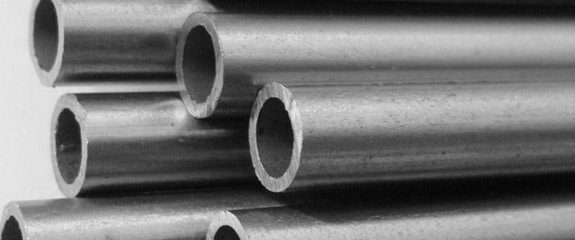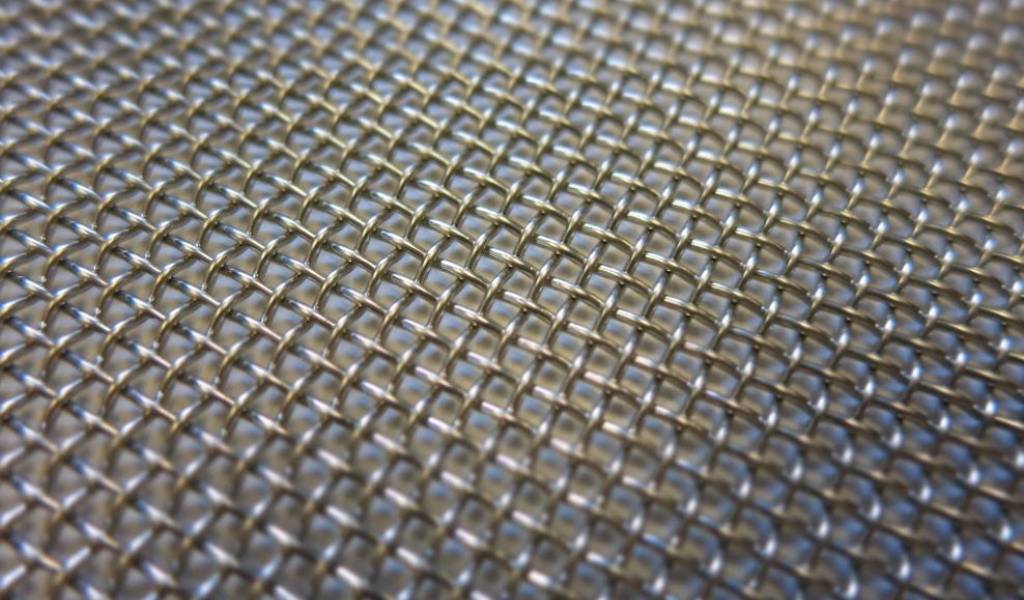314 Stainless Steel vs Inconel 600: Exploring the Best Choice for You
When it comes to weaving woven wire mesh, alloy selection is a fundamental element to achieving desirable performance. Not only does it play into the strength and durability of the mesh itself, but also how the mesh and material react with one another.
314 stainless steel and Inconel 600 are prominent alloys used when heat resistance is pivotal. With each alloy offering its own attributes, benefits, and drawbacks, which one should you use to weave your next woven wire solution?
For 150 years, W.S. Tyler has been committed to helping customers like you navigate the various parameters associated with woven wire until the best possible solution is created.
And with that, we wrote the following article to take a deep dive into the complexities of 314 stainless and Inconel 600 so you are better equipped to make an educated decision. You will learn:
- What 314 stainless steel is
- The benefits of using 314 stainless steel
- The drawbacks of using 314 stainless steel
- What Inconel 600 is
- The benefits of using Inconel 600
- The drawbacks of using Inconel 600
- Determining what alloy to use
What Is 314 Stainless Steel?

Falling under the category of austenitic alloy, 314 stainless steel is a low cost heat resistant alloy that shares similar qualities as 310 stainless steel. Its chemical composition goes as follows:
- Carbon (.25%)
- Chromium (23-26%)
- Nickel (19-22%)
- Manganese (2%)
- Silicon (1.5-3%)
- Phosphorus (.045%)
The silicon in the composition allows 314 stainless steel to deliver improved oxidation and heat resistance. More so than most chromium-nickel stainless steel alloys.
What Are the Benefits of 314 Stainless Steel?
314 stainless steel is predominantly used for its ability to perform when subjected to extreme heat. In fact, it has greater resistance to heat than most stainless steel variants, withstanding temperatures reaching 2102F (1150C).
At the same time, it has become known for its favorable oxidation resistance. This includes resistance to scaling even when subjected to extreme heat.
It should be noted that its high resistance to heat does not prevent 314 stainless steel from having excellent weldability.
Are you looking to improve how you weld woven wire? Learn about the key welding techniques applied to woven wire in the article below:
Lastly, 314 stainless steel is surprisingly dense, especially when compared to similar alloys. This, in turn, allows it to deliver favorably high strength.
What Are the Disadvantages of 314 Stainless Steel?
While 314 stainless steel offers a great balance between cost-effectiveness and heat resistance, the alloy's corrosion resistance should be considered. This is because it is not as robust as the corrosion resistance offered by other austenitic alloys.
Something else of note is its thermal conductivity. Because of its resistance to heat, 314 stainless steel has low thermal conductivity, rendering it not ideal for applications that rely on efficient heat transfer.
At the same time, it does not perform well in low-temperature applications either.
Now, if you choose to experiment with 314 stainless steel woven wire, you must be mindful of work hardening. 314 stainless steel can become more rigid but less ductile after undergoing mechanical processing.
What Is Inconel 600?

Inconel 600 is a nickel-chromium alloy widely used for its corrosion and heat resistance performance. Its chemical composition goes as follows:
- Nickel (72%)
- Chromium (14-17%)
- Iron (6-10%)
- Manganese (1%)
- Silicon (.5%)
What Are the Benefits of Inconel 600?
Like 314 stainless steel, Inconel 600 is considered a heat-resistant alloy. Its chemical composition allows it to maintain favorable strength and toughness while being subjected to extreme heat.
While it delivers tremendous heat resistance, Inconel 600's chemical composition enables the alloy to combat corrosion. This includes corrosion caused by alkaline solutions, organic compounds, inorganic compounds, and chloride-ion stress corrosion.
To that end, its high level of chromium allows Inconel 600 to combat oxidation.
When it comes to the mechanical properties of the alloy, Inconel 600 maintains high tensile strength and is not known to become brittle. This remains true in both high and low-temperature applications.
What Are the Disadvantages of Inconel 600?
One of the biggest pitfalls that you will face when investing in Inconel 600 is its cost. With a high nickel content and specialized product process associated with it, Inconel 600 is considerably more expensive than other heat-resistant alloys.It should also be noted that Inconel 600 is vulnerable to thermal expansion. When subjected to extreme heat, Inconel 600 is known to expand dramatically and cause issues to applications that lean on dimensional stability.
Curious as to how thermal expansion can affect your woven wire endeavors? Read the article below:
Lastly, Inconel 600 is a relatively dense alloy. This, in turn, makes it a heavy material, which can affect equipment performance in weight-critical applications, such as aerospace.
314 Stainless Steel vs Inconel 600: What Is Right for Me?
If your process subjects woven wire to both extreme heat and a highly corrosive atmosphere, Inconel 600 will best suit your needs. This is mainly due to 314 stainless steel's lack of corrosion resistance performance.
But at the same time, if you are looking to accommodate tight budgetary constraints and your process requires heavily machined woven wire components, 314 stainless steel will make for the most efficient process.
When selecting what alloy to use it is critical that you are considering the specific requirements of application. This all goes to say that you should thoroughly evaluate your operation to gain insight into your exact needs to make a tailored selection.
Optimize Your Results With Formed Woven Wire
314 stainless steel and Inconel 600 are woven wire alloys widely used where extreme heat is to be expected. 314 stainless steel is used when a cost-effective alloy that can be formed easily is needed, whereas Incolnel 600 is used for the most extreme conditions that call for an alloy that can combat both extreme heat and corrosion exposure.
Once an alloy selection has been made, you must begin to look at the parameters you will use to form your woven wire. After all, woven wire components are only as successful as the forming process they undergo.
W.S. Tyler has been weaving woven wire into countless industries for over 150 years and is here to share the knowledge within our four walls to ensure you are equipped to achieve accurate and repeatable results.
Read the article below to gain the fundamental knowledge needed to properly form woven wire:
About Ronnie Brown
Ronnie is the Content Writer for W.S. Tyler and has four years of experience as a professional writer. He strives to expand his knowledge on all things particle analysis and woven wire mesh to leverage his exceptional writing and graphic design skills, creating a one-of-a-kind experience for customers.




